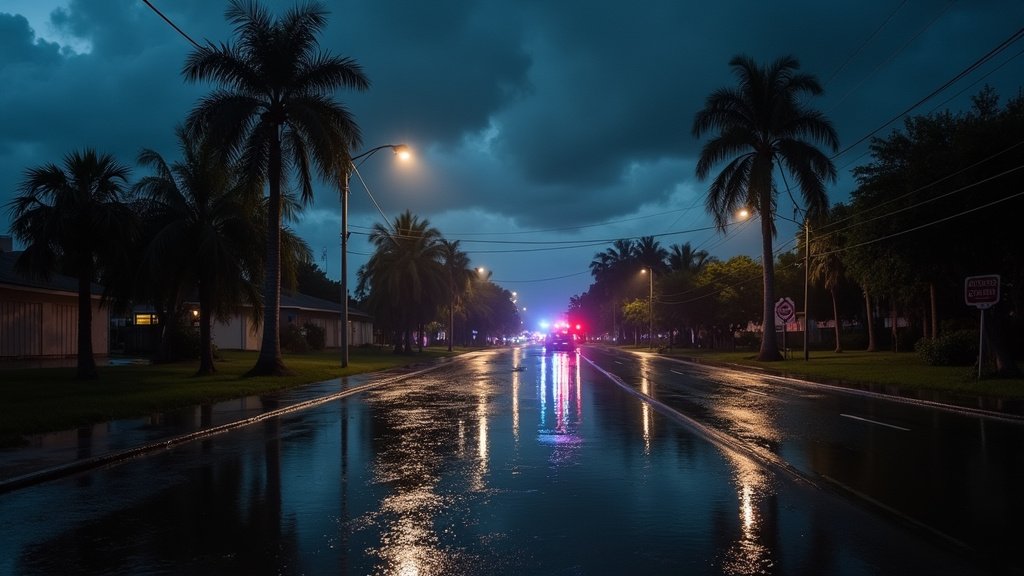SOUTH FLORIDA – Two escalating wildfires in the vast Everglades wilderness have scorched more than 1,800 acres, sending dense plumes of smoke eastward across Broward County and into parts of Miami-Dade, prompting air quality alerts and significantly reducing visibility on major roadways. The ongoing blazes, currently uncontained, represent a critical environmental and public health concern for the region, making it a top trending news story.
Expanding Infernos Threaten Air Quality
As of Wednesday morning, two primary wildfires are dominating the landscape: the Mile Marker 39 Fire, which has consumed over 1,600 acres, and the Sawgrass Fire, spanning approximately 250 acres. Both fires, located far inland in Broward County and northwest of Fort Lauderdale, are reported by the Florida Forest Service to have zero percent containment. A third, smaller fire, the Krome Avenue Pit Fire in Miami-Dade County, covers 200 acres but is significantly more contained at 90 percent.
The smoke from these uncontained infernos is being pushed eastward by prevailing northwesterly winds, creating a hazy, ruby-red sky and dramatically impacting air quality across metro and coastal Broward County. Areas such as Hollywood, Pembroke Pines, Coral Springs, Fort Lauderdale, and Pompano Beach are experiencing the brunt of the smoke. Air quality monitors in Broward County and North Miami registered an Air Quality Index (AQI) of 133 for particulate matter (PM2.5), a level considered “unhealthy” for sensitive individuals. Experts warn that any AQI above 100 indicates unsafe conditions.
Navigating Reduced Visibility and Health Risks
The National Weather Service in Miami has issued special weather statements, urging drivers to exercise extreme caution. Visibility on roadways, particularly along Interstate 75 and U.S. 27, can drop to three miles or less suddenly over short distances due to the dense smoke. Motorists are advised to use their vehicle’s air conditioner recirculation settings to minimize smoke inhalation while commuting.
Beyond immediate visibility hazards, the particulate matter from the brush fires poses significant health risks. Broward’s Natural Resource Division, along with the National Weather Service, is advising residents sensitive to smoke and air pollution, including those with respiratory conditions, to limit outdoor activity and shorten the duration of time spent outdoors. The long-term effects of inhaling such smoke, especially combined with urban emissions, remain a concern for public health officials.
The Everglades: A Landscape Shaped by Fire
While alarming, wildfires are a natural and historically integral component of the Everglades ecosystem. For thousands of years, lightning strikes have ignited fires in the sawgrass prairies and pinelands, playing a crucial role in maintaining the unique biodiversity of the “River of Grass.” These periodic burns prevent the encroachment of hammock species, mangroves, and exotic plant species that would otherwise shade out fire-adapted vegetation. They also improve the passage of water through the sloughs and help reduce the accumulation of flammable fuels, thereby protecting less fire-tolerant tree islands.
However, the intensity and frequency of current wildfires are exacerbated by prevailing environmental conditions. Florida has been grappling with an unrelenting drought, with over 84 percent of the state experiencing some form of drought and more than a quarter facing extreme drought conditions earlier this year. Decades of restricted freshwater flow to the southern Everglades, largely due to human intervention, have left vast portions of the ecosystem unusually parched, creating ripe conditions for widespread blazes.
Restoration Efforts and Future Outlook
Authorities, including the Florida Forest Service and local fire rescue teams, are actively monitoring the situation and developing strategies to manage the fires. While direct containment efforts are challenging in the inaccessible regions of the Everglades, the focus remains on preventing spread to populated areas and critical infrastructure.
The current crisis underscores the vital importance of the Comprehensive Everglades Restoration Plan (CERP), the world’s largest ecosystem restoration project. Designed to reestablish natural freshwater flows, CERP aims to build greater resilience against environmental stressors like drought and wildfires, mitigating their impact on both the ecosystem and surrounding communities. As this unfolding news continues to impact daily life across South Florida, vigilance and adherence to official advisories remain paramount for residents navigating the smoky conditions.





